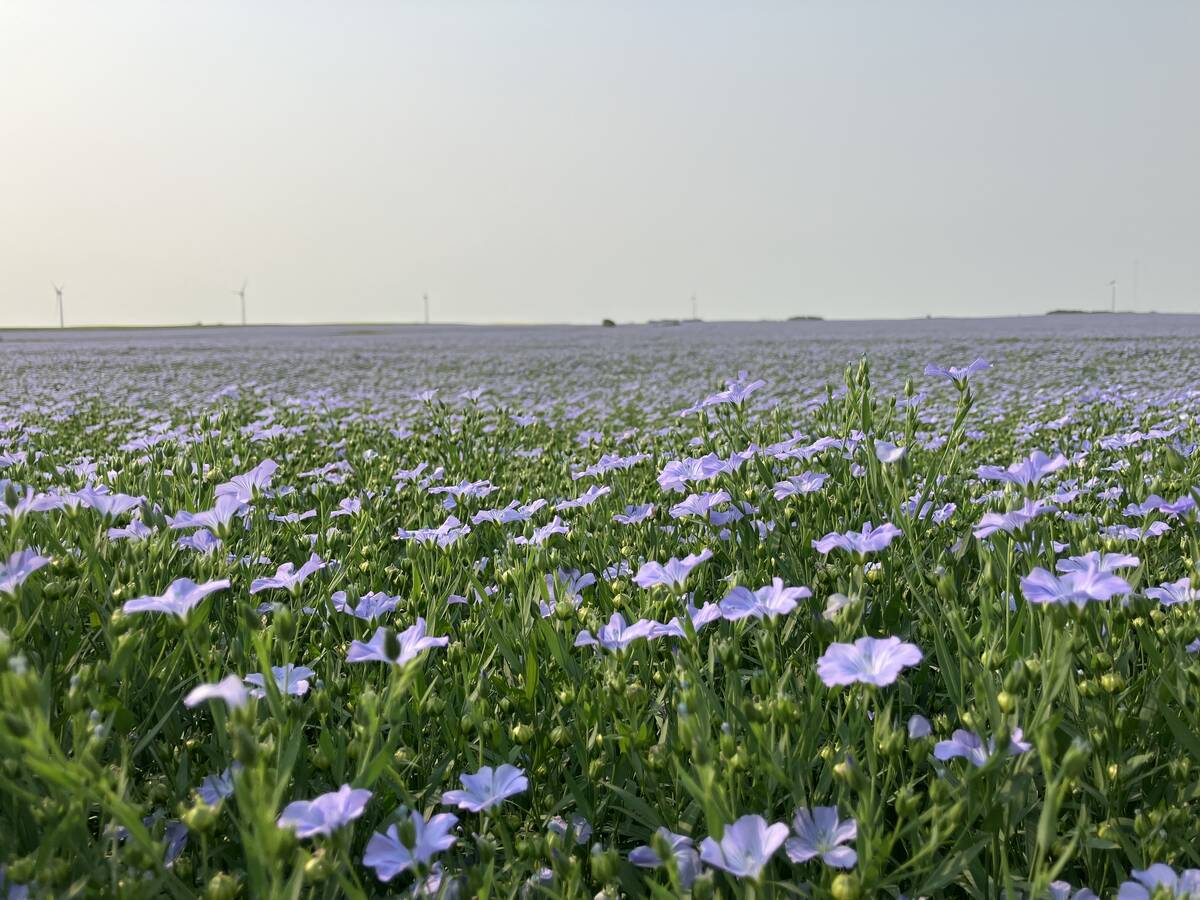Alberta expects its spending on farm programs to shrink by about 7.5 per cent in what’s seen as an austerity budget that ends the province’s crop revenue insurance coverage (RIC) program.
The province’s overall funding support for ag programs in Finance Minister Ted Morton’s 2010 budget, released Tuesday, is just under $1.1 billion.
Leaving out $268 million in disaster assistance payments in 2009-10, the 2010-11 budget reflects an $86 million cut from 2009-10, due mainly to “reduced indemnities” for ag income support and crop insurance, the province said.
Those reductions include the Alberta-only RIC program, which was offered by the province’s ag insurance and lending agency, Agricultural Financial Services Corp. (AFSC). RIC administration expenses were paid by the province with no federal support.
Read Also

‘A little bit of a resurgence for flax’
Flax is sitting in a good position following this year’s harvest, said Scott Shiels of Grain Millers Canada in Yorkton, Sask.
Tuesday’s budget papers state only that RIC “will no longer be offered to producers” but add that RIC has been seen as giving “an artificial price support that could have potential for a countervail action from trading partners.”
RIC was billed in 2009’s AFSC offerings as “protection against abnormally low crop prices” with no direct premium cost, although Alberta farmers had to buy both production insurance and the spring price endorsement (SPE) to get it.
On the other hand, the province said Tuesday it plans to continue providing its cattle price insurance program in 2010. It billed the cattle program as “an example of a made-in-Alberta risk management tool to help protect against declines in cattle prices.”
“Core programs” at AFSC, including income stabilization, lending assistance and production insurance, will continue to be funded jointly by the Alberta government, farmers and the federal government, the province said.
Overall ag spending in the province’s budget includes $418 million for AFSC insurance programs; $292 million for ag income support, including $129 million in provincial contributions to AgriStability; $116 million for industry development and food safety; and $50 million for the Alberta Livestock and Meat Agency, tasked with developing initiatives for a “sustainable and competitive livestock industry.”
Overall, the suite of programs funded under the federal-provincial Growing Forward ag policy framework is expected to provide $40 million across the industry. Another $9 million is allocated to the federal cost-shared AgriFlex program supporting “innovation and efficiencies in agriculture.”
Allocation management
Other non-ag initiatives of interest in the province’s budget include a number of large-scale carbon capture and storage (CCS) projects, seeing $100 million in 2010-11 and $500 million over three years.
Among those are a plan to ship carbon dioxide from a fertilizer plant and proposed upgrader east of Edmonton to oil fields in east-central Alberta to “enhance (oil) recoveries.”
The province’s “Water for Life” strategy gets $25 million in cross-ministry operating support in 2010-11, including a pledge for a review of Alberta’s water allocation management system, “to ensure it will effectively address economic and population growth.”
Over $13 million is budgeted in 2010-11 for the province’s new Land Use Secretariat in 2010-11 to oversee development and implementation of the province’s new land-use framework.
That framework “will help us manage pressures on Alberta’s lands and continue to balance economic development and environmental protection,” Sustainable Resource Development Minister Mel Knight said Wednesday in a budget release.
The province’s total 2010 budget is based on overall revenue of $34 billion, up $423 million (1.3 per cent) from 2009. That includes a forecast 21.7 per cent increase in resource revenue to $7.3 billion in 2010-11, reaching $10.4 billion by 2012-13.
“The global economic recovery is expected to increase prices and demand for oil, and natural gas prices are expected to be boosted by an improved North American economy, although higher supplies from U.S. shale gas development and liquefied natural gas imports are likely to limit any increases,” the province said.
Morton’s budget thus forecasts deficits of $4.7 billion for 2010-11 and $1.1 billion in 2011-12, then a return to surplus ($505 million) in 2012-13.














